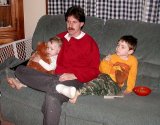framing
 In case you were wondering where it went, there WAS a post here entitled "framing and scaffolding", but I wrote it when I was in a hurry, and decided later to replace it with a more in-depth series of 2 posts, splitting the topics.
In case you were wondering where it went, there WAS a post here entitled "framing and scaffolding", but I wrote it when I was in a hurry, and decided later to replace it with a more in-depth series of 2 posts, splitting the topics.We were about two months into our RDI journey, spending most of September and part of October reading and learning as much as we could about RDI, had gotten pretty good at using mostly Declarative Epxerience-Sharing language intsead of Imperitive language, and had reduced a lot of our verbal garbage and was relying much more on non-verbal language to communicate with Jacob and each other. We had spent the better part of November working on Regulation and the R-C-R cycle with Jacob. We were ready to start looking at the Stage One (Emotion Sharing) objectives.
The first step was to frame our activity. Framing is setting up an activity so that your objectives can be acheived. In Jacob's case, this included re-decorating (or rather, UNdecorating) our living room, as just about everything distracted him, especially anything with writing on it or any surface that he could see his reflection in. We removed all reading materials and toys from the room, took out all the chairs other than one sofa that was pushed up against the wall, covered the TV and fireplace doors with sheets, and pulled the curtains shut whenever we worked with Jacob. These modifications to the environment left him more available to attend to us, increasing our chances of successfully eliciting Emotion Sharing from him. Not all kids are going to require this barren type of environment (which used to be refered to as RDI Lab Time), some kids can jump right into RDI activities in the home in general. Jacob wasn't one of those kids.
Another important aspect of framing is to recognize that there are 4 basic ways (frameworks) to do any activity. You can do the same thing at the same time (parallel simultaneous); you can do different things that are related at the same time (complimentary simultaneous); you can take turns doing the same thing (parallel sequential); and you can take turns doing different things that are related to each other (complimentary sequential).
I'll use feeding the cats, one of our earliest RDI activities, as an example of how it might be framed. First of all, I would bring the cat bowls, cat food bin, and scoops into the non-distracting living room. From there, I could frame the activity in a parallel simultaneous manner by us both scooping and pouring the cat food at the same time (each with our own scoops). Or I could frame it in a complimentary simultaneous manner by my scooping while he held the bin, or me pouring while he held the bowl. I could frame it in a parallel sequential manner by taking turns scooping and pouring -- first I scoop, then he scoops, then I pour, then he pours. Or I could frame it in a complimentary sequential manner by my scooping the food, then handing the loaded scoop to him, and then he pours it into the bowls.
Each of these framworks can be used to set up the overall RDI Framework, which is Variations on a Theme. So we would want to change it up quite freqently -- some days I would scoop and he would pour, other days he'd scoop while I held the bowl, etc.
And then there is scaffolding, which is another tool in the RDI toolbox, that I'll talk about next.


0 Comments:
Post a Comment
<< Home